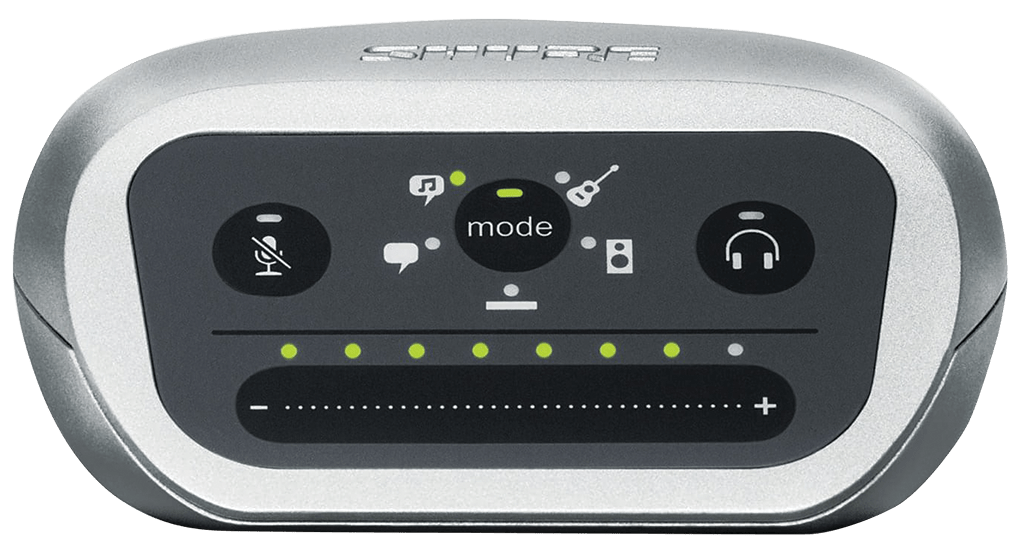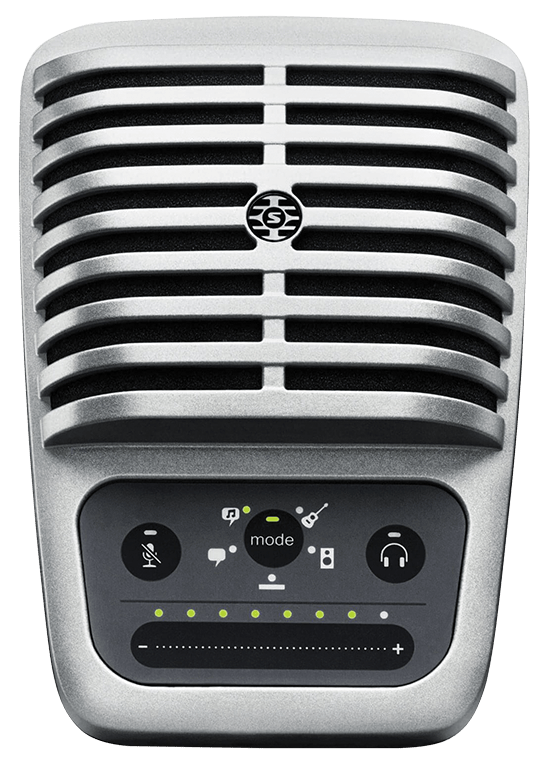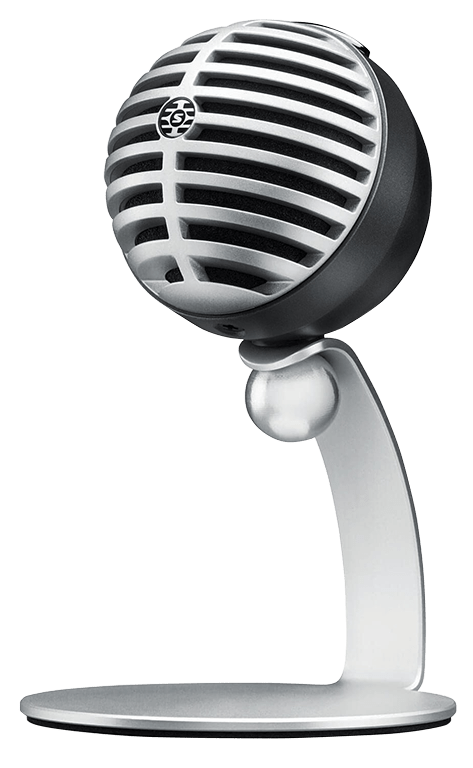
Review: Shure Motiv Portable Interfaces
These Shure pocket-sized audio interfaces are easy to use and easy on the eyes.
MVi
Expect to pay $215
The MVi’s dense Shure construction would do serious damage if thrown at a window. That’s not to say it’s big — it’ll easily fit in your back pocket. Its weight and indestructible feel means it probably wouldn’t suffer if put through strenuous conditions in the ‘field’.
All three Motiv devices serve slightly different purposes but accomplish the same basic goal — a portable, simple interface for use with a computer or iOS device. Each is capable of transporting 24-bit/48k over USB 2.0. They’re plug ’n’ play, and the hardware controls changed my Mac’s system volume — a neat touch. For on-the-run recording, the ShurePlus MOTIV iOS app offers recording and editing functionality on your iPad or iPhone.
The MVi is the only Motiv that doesn’t have a built-in mic. To compensate, it’s also the only Motiv that has a proper XLR/jack combo input. The Class A preamp is capable of providing phantom power for condenser mics, and an economical +36dB of gain, while the jack will let you DI any instrument. The five DSP selections affect the input quite significantly, making it easy to flick through and pick the best one. The idea is to capture ideas in the moment without getting nit-picky on signal chain perfection. The touch strip provides a classy method of controlling mic gain or output volume. There’s a slight lag on the central touch-sensitive button but nothing that’ll stunt your workflow.

MV51
Expect to pay $299
The MV51 is the largest of the trio in both size and weight, with a design that spins off the Shure Classic 55 microphone. It’s as much an interior design accessory as a serious tool. The control section mirrors the MVi, with the same five DSP options available. Instead of an XLR input, the MV51 sports a built-in large diaphragm cardioid condenser mic. Unscrewing the rubber foot on the ‘photo frame’ leg reveals the mic stand thread which lets you perch the entire unit at the end of a boom. Granted, it looks weird and you’ll have two cables — USB and headphones — plugged into it, but it does the job fine for rough-’n’-ready single-input applications like vocal overdubs or quick acoustic guitar tracking.
The mic sounded decent, although it leans toward accentuating honk if it meets a poorly matched source. Gain seemed to vary noticeably with different DSP choices, with Flat eliciting the lowest level. The Speech setting worked well on spoken word, even seeming to add a little compression.

MV5
Expect to pay $175
MV5 is the cheapest of the bunch. I love its looks. You can mount the spherical mic on the included aluminium stand, or sit it flat on your desktop as an interior design element. Unfortunately the stand provides little isolation, so any kind of vibration — like typing on a keyboard — travels right through to the mic capsule. The buttons on top for DSP toggle and Mute produce a loud click in the mic, so don’t fiddle with these in the middle of a recording or podcast. Same with the headphone volume dial, mounted a little awkwardly behind the mic.
Personally I preferred the sound of the MV5’s microphone over the MV51’s. Which is strange because it’s much cheaper, but it seemed to like my voice better. Unlike the MV51 and MVi, it has three DSP presets instead of five (Flat, Music, Speech). Again, I noticed sizeable jumps in level between these presets which suggests there’s more going on than just an EQ curve. It proved to be easy to capture a usable, natural sound.

















RESPONSES